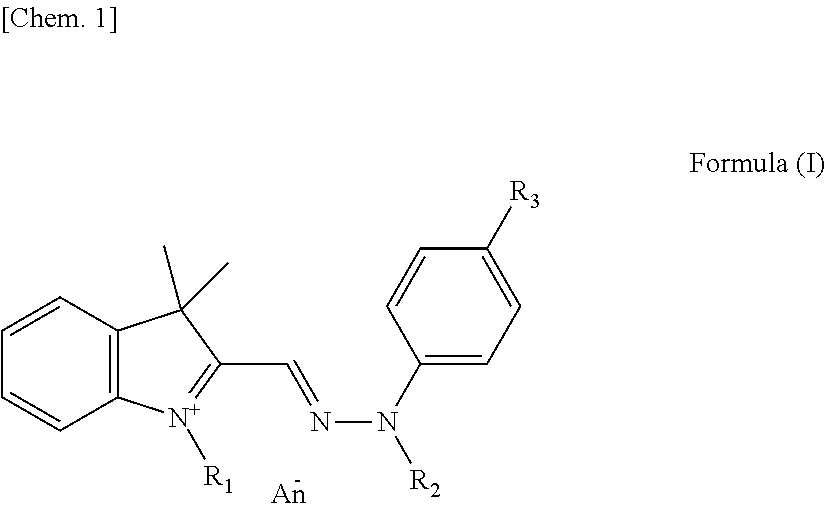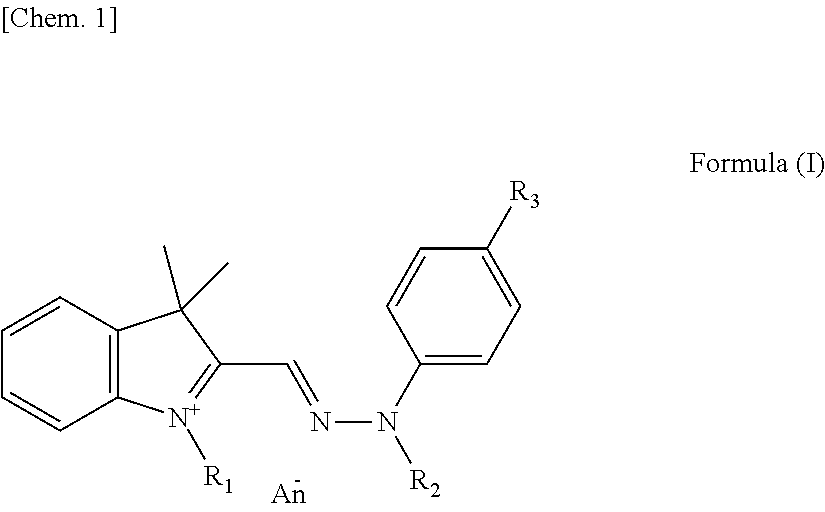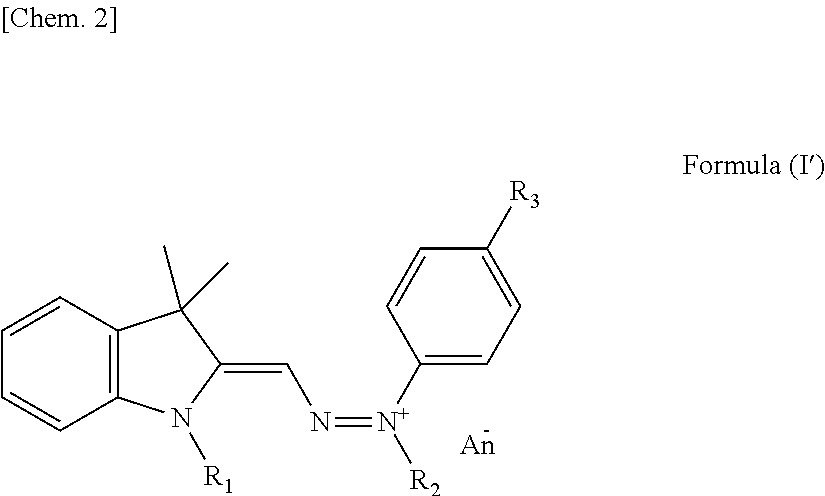Yellow colorant for hair dyeing, composition for hair dyeing, and hair dyeing method
a colorant and dyeing technology, applied in the field of yellow colorants for hair dyeing, can solve the problems of dye damage to hair, poor dyeing effect, skin allergic reaction (irritation), etc., and achieve the effects of high dyeing performance, good water-solubility characteristics, and excellent shampooing speed
- Summary
- Abstract
- Description
- Claims
- Application Information
AI Technical Summary
Benefits of technology
Problems solved by technology
Method used
Image
Examples
example 1
[0072]As shown in Table 1, 1 g of citric acid monohydrate and 11 g of trisodium citrate dihydrate as pH regulators were dissolved in ion-exchanged water to prepare 1 kg of an aqueous solution (water+regulator) having a pH of 6. In the resultant aqueous solution having a pH of 6 were added Yellow 29 as a dye and benzyloxyethoxyethanol as a penetrant in the ratio as shown in Table 2 to prepare a composition for hair dyeing having a pH of 6. A 10 g of the thus-prepared composition for hair dyeing was metered, and 1 g of human gray hair (100%, Beaulax, Item Code BM-W-A) was put thereinto and dyed at 45° C. for 20 minutes. The resultant dyed hair was rinsed with water (running water at 15 to 25° C., for about 1 minute), then soaped under the soaping condition mentioned below, further rinsed with water (running water at 15 to 25° C., for about 1 minute), and then spontaneously dried at room temperature (about 20° C.) to prepare a test sample. In the following Examples and Comparative Exam...
example 2 (
Shampooing-Fastness Test)
[0081]The test sample with Yellow 29 prepared in Example 1 was tested according to the shampooing-fastness test mentioned below, and the dyeing density (K / Sd) and color difference (ΔE*) before and after the test were determined. The results are shown in Table 4. In the Table, the residual ratio (%) means the ratio of the dyeing density after the test to the dyeing density before the test.
(Shampooing-Fastness Test)
[0082]The test sample was subjected to a cycle operation of (1) shampooing followed by (2) treatment as mentioned below, repeatedly five times in all, and then spontaneously dried at room temperature (about 20° C.).
(1) Shampooing Condition
[0083]Shampoo liquid: aqueous 5% sodium laurylsulfate solution
[0084]Bath ratio: 1 / 10 (mass of shampooing liquid relative to 1 g mass of dyed hair)
[0085]Processing temperature: 45° C.
[0086]Processing time: 20 minutes
[0087]Post-treatment: rinsing with water
(2) Treatment Condition
[0088]Treatment liquid: aqueous 5% tr...
example 3 , example 4
Example 3, Example 4
[0095]Aqueous solutions having a of 5 and 7 were prepared in accordance with Table 1, and test samples were prepared according to the same method as in Example 1 (dye: Yellow 29) except that the aqueous solutions having a pH of 5 are 7 was used, respectively, in place of the aqueous solution having a of 6, The dyeing density (K / Sd) and the color values (L*, a*, b*) of the resultant test samples were determined. The results are shown in Table 5.
PUM
 Login to View More
Login to View More Abstract
Description
Claims
Application Information
 Login to View More
Login to View More - R&D
- Intellectual Property
- Life Sciences
- Materials
- Tech Scout
- Unparalleled Data Quality
- Higher Quality Content
- 60% Fewer Hallucinations
Browse by: Latest US Patents, China's latest patents, Technical Efficacy Thesaurus, Application Domain, Technology Topic, Popular Technical Reports.
© 2025 PatSnap. All rights reserved.Legal|Privacy policy|Modern Slavery Act Transparency Statement|Sitemap|About US| Contact US: help@patsnap.com



